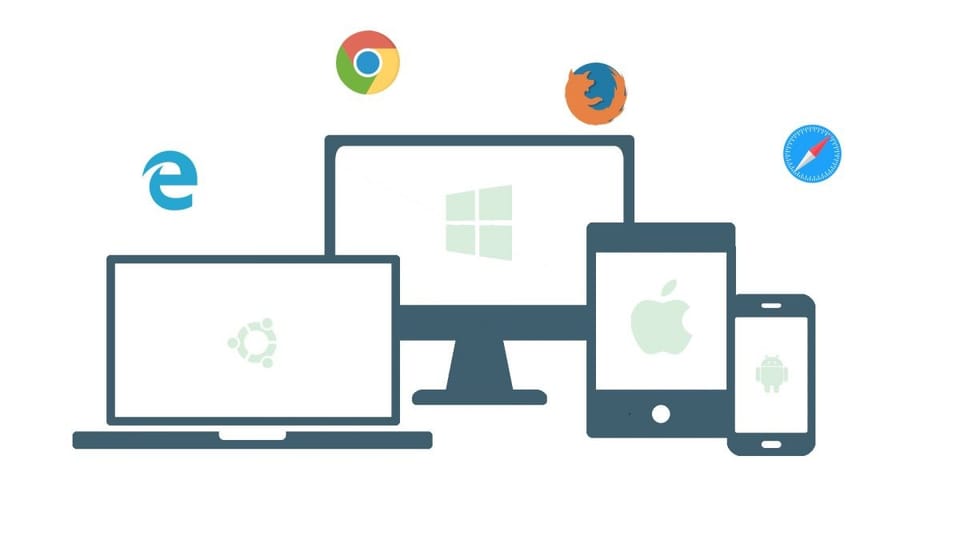What is Cross-Browser Testing and Why is it Needed?

According to the UN(United Nations) as of 2023, there are approximately 8 billion people on Earth. Now, it’s logical to think that these people all differ in various ways, culturally, physically, and economically. They all have different choices in the type of food they like, the type of phones they use, and how they choose to use them. This is the reason why it is of utmost importance to make sure your applications behave and perform as intended across different browsers and devices. So a man in the USA(United States of America) using an iPhone on a Safari browser gets the same experience as a woman in India on a Samsung using Google Chrome. As of today, there are several major web browsers in use around the world. These include Google Chrome, Safari, Mozilla Firefox, and Opera to name a few. There are also lesser-known browsers used by different users. This brings us to our next question.
This blog is written by Okosa Leonard at KushoAI. We're building the fastest way to test your APIs. It's completely free and you can sign up here.
What is Cross-Browser Testing?
Cross-browser testing is the process of verifying that your web application behaves and appears as intended across different web browsers, operating systems, and devices. This type of testing ensures that all users have a consistent experience, regardless of their browser choice. Now let us look at a list of different popular browsers, operating systems, and devices that are in vogue. Please remember, that this doesn’t mean you should not test for legacy browsers. Some users are still old-school.
Web Browsers
Some of the most popular web browsers include:
- Google Chrome
- Mozilla Firefox
- Apple Safari
- Microsoft Edge
- Opera
- Brave
- Internet Explorer
Operating Systems
These are some of the most well-known operating systems used today:
1. Windows
2. macOS
3. Linux
4. Android
5. iOS
6. Chrome OS
7. Unix
For devices, they are mainly mobile phones, tablets and desktop computers.
Now imagine being a freelancer making a web application for a local or international business or client, or a startup ready to launch the next unicorn, or maybe even an experienced organization with an existing web application ready to launch a new feature and thinking well if it works on this browser, operating system and device it should be the same in all of them right? Sounds a little impractical doesn’t it? That brings us to our next question.
What is the Importance of Cross-Browser Testing?
Why should you test your web applications on all these devices, operating systems and browsers? I’ll start with the most important reason:
- User Experience: I’m confident that as a developer, enterprise or business you don’t want your users feeling unsatisfied that they’ve decided to try out your product. You want them to open that app again and continue to enjoy what you’ve worked so hard on. What in some cases you’ve spent so many resources on be it financial and so on? This is why your applications must perform well across various devices, browsers and operating systems. In the long run, it helps save costs and an institution’s reputation.
- Diverse Browser Landscape: All these browsers, be it Chrome, Opera, Safari or Firefox possess different rendering engines and technologies. This is why it is important to ensure you test your web applications on different browsers and make sure they give the same output on each of them. For example, I recently created a web app with Tailwind and Next.js. I used the Tailwind dark: class. It worked perfectly on almost all browsers except Opera. I was genuinely stunned when a friend told me about it. I was lucky this was a personal project. Unless maybe the outcome would’ve been different. I could’ve lost my job, or tons of users, anyway the result would not be positive. And could have been avoided if I had just done more tests.
- Mobile Considerations: You have to consider the fact that a large percentage of users are going to use your application on mobile first before they do so on a large screen. So it is important that you make sure your application works seamlessly across different mobile devices and it’s browsers.
These are some reasons why you should carry out cross-browser testing. Now let’s talk about the different approaches we can take when carrying out cross-browser testing.
Approaches to Cross-Browser Testing
There are different approaches you can take when you decide to carry out cross-browser testing these are mainly:
- Manual Testing: This involves checking functionality and design across different browsers. Its benefits include an in-depth exploration of user interactions across different devices, browsers and operating systems, but it can be time-consuming and prone to human error. To maximize effectiveness, a tester should use checklists and predefined scenarios.
- Automated Testing: This involves using tools like Selenium and Cypress. These tools accelerate the testing process and improve coverage, allowing for quick identification of issues across multiple browsers without repetitive manual effort.
- Cloud-Based Testing Platforms: Providing scalable and accessible environments for cross-browser testing. Certain services enable teams to test on various devices and browsers without extensive local setups. This flexibility enhances collaboration and ensures comprehensive testing, making it a vital approach for modern web development.
Cross-browser testing is getting easier and easier day by day with more tools coming out ready to help make the lives of software development professionals, Quality Assurance engineers, SDETs and software testers easier and more productive. This is where KushoAI comes in.
Conclusion
Cross-browser testing has become increasingly important as more products come out and more users continue to differ in what browsers and devices they choose to access products from. This is why tools that help the testing process easier and lead to faster detection of bugs need to be encouraged to make up for the ever-growing demand of everyday users.
This blog is written by Okosa Leonard at KushoAI. We're building an AI agent that tests your APIs for you. Bring in API information and watch KushoAI turn it into fully functional and exhaustive test suites in minutes.

Member discussion